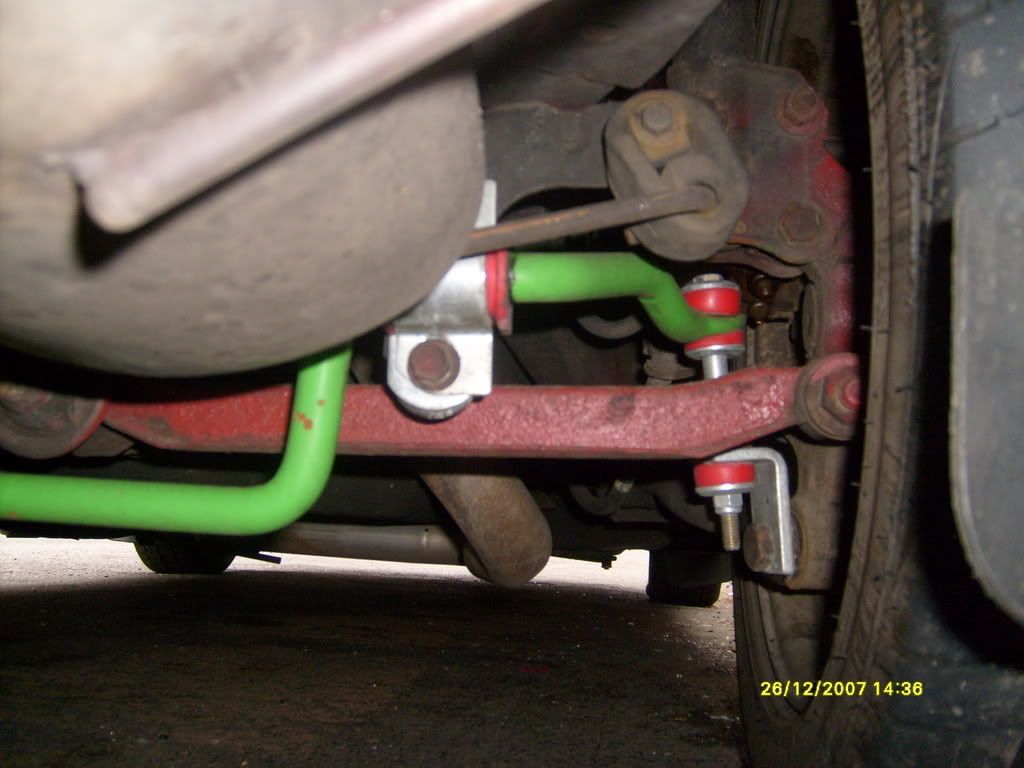I meant to do your braking before you turn in. Since you are already comfortable and know most, if not all of the limits of your car, you know where to start braking to get what you need done before a certain point. If you have already slowed down before you need to turn, that is less stress on your tires that are taking most of the weight transfer. There for you can turn in sooner and be on the gas a lot earlier, which will increase your exit speed greatly.
As far as your sway bars are concerned, that depends on what you want to do with the car. If you want to start autocrossing just put on the rear. That will make the rear easier to rotate around very tight and slow corners. But from what you have already described you don't want the rear as tail happy as it is. The rear sway bar will tighten the rear of the car a TON, but given the right inputs( a quick lift off the throttle or stab of the brakes sending the weight rushing forward), it can easily bring the a$$ out/around.
Now, if you are going to be driving the car in more open driving conditions (tracks or spirited driving on long windy roads) you don't want the rear to be as easy to rotate, due to the longer and wider corners. I believe there are a few road racer thread around here somewhere. Anyways, in that case you would want both sway bars. (My info on front sway bars probably isn't the best, I don't usually work with those on our cars.

) The front sway bar will keep both ends of the car planted, because it has less "give" that the OEM front sway bar. I'm not exactly sure why this works but it does.

It's much easier to explain stuff like this in person and with a car to show examples with.
For a better explanation of how the front sway bar will work on the car, search for more from Andy Hollis or look around both forums. That would be better info than I can offer as far as front sway bars on our chassis' are concerned.








 Be the first to like this post.
Be the first to like this post.





 ) The front sway bar will keep both ends of the car planted, because it has less "give" that the OEM front sway bar. I'm not exactly sure why this works but it does.
) The front sway bar will keep both ends of the car planted, because it has less "give" that the OEM front sway bar. I'm not exactly sure why this works but it does.  It's much easier to explain stuff like this in person and with a car to show examples with.
It's much easier to explain stuff like this in person and with a car to show examples with. Back to top
Back to top
